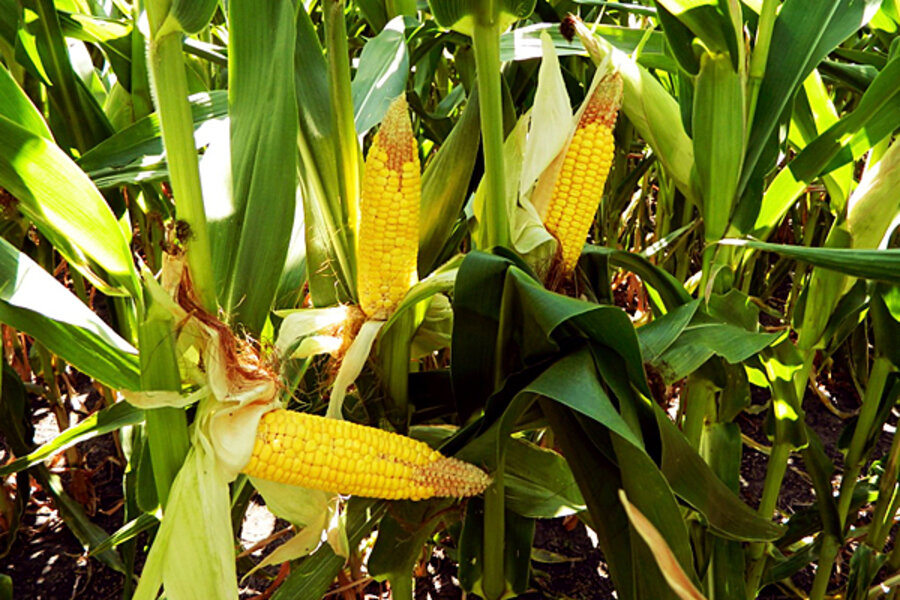US drought: Gasoline prices rise as corn stalks shrivel
Loading...
| NEW YORK
The price of gasoline is rising as the corn stalks are shriveling in the Midwest.
Since the beginning of July, the price of gasoline has risen about 16 cents a gallon, according to AAA. Energy analysts say at least some of that rise can be attributed to the severe drought scorching the Midwest plains because about 10 percent of each gallon of fuel is made from ethanol. One of the main ingredients of ethanol is corn.
Because of the drought, the price of corn has soared. It is now just under $8 a bushel, up about 23 percent on the year and up 39 percent over the past five weeks. Reflecting the rising price of corn, the price of ethanol on Chicago’s futures market is up about 11 percent since the beginning of July.
“A good soaking rain in the corn belt would help with the price of ethanol,” says Avery Ash, manager of regulatory affairs at AAA in Washington.
Ironically, the price of ethanol rose last year as well, but because of flooding in the Midwest. Because of relatively high corn prices, the price of ethanol peaked about 50 cents a gallon higher than current prices. However, a special federal tax credit helped bring down the cost for refiners. That tax credit has now expired.
The high price of corn is not the only factor in the rising price of gasoline, says Sander Cohan, a principal at Energy Security Analysis, Inc. in Wakefield, Mass. Rising tensions with Iran has bolstered world oil prices since about 17 percent of the world’s traded oil passes through the Straits of Hormuz. The Iranians, facing increasing hardship because of oil sanctions, have practiced war games in the Straits and the US has increased its naval presence there.
On Friday the price of crude oil on commodities markets was up about 75 cents a barrel to over $90 a barrel, up about $10 a barrel over the last month.
The price of gasoline is up even with the economy barely moving. On Friday, the government reported that gross domestic product rose only 1.5 percent in the second quarter. During that quarter, the price of gasoline had fallen which helped consumers’ pocketbooks. However, President Obama’s administration said uncertainty in Europe and shrinking spending at the state and local level had detracted from economic activity.
Despite the recent jump in gasoline prices, they are still 21 cents lower than last year at this time, according to AAA. In fact, Mr. Ash says this is the first week since February that only one state— Hawaii— has gasoline prices over $4 a gallon. Prices in Hawaii are now $4.15 for a gallon of regular grade fuel.
Historically, prices have remained pretty flat through Labor Day, which is considered to be the end of the summer driving season, Ash says. “Then, after hurricane season and after the refiners change over to the winter blend of fuel, the prices fall off.”
In fact, Ash points out that one of the potential benefits of the drought is that some meteorologists say there is an increasing amount of dust in the upper atmosphere. This tends to diminish the prospects for hurricanes. “A lower risk of hurricanes puts downward pressure on gasoline prices,” he says.
Congress requires US gasoline refiners to use an increasing amount of renewable fuels. The corn portion is expected to increase through 2015. However, Cohan says the US should have no trouble meeting the federal mandate which will be about 1 million barrels per day within the next three years.
“Even with the drought we have a surplus of ethanol and we’re exporting it to Europe and Brazil,” he says.







